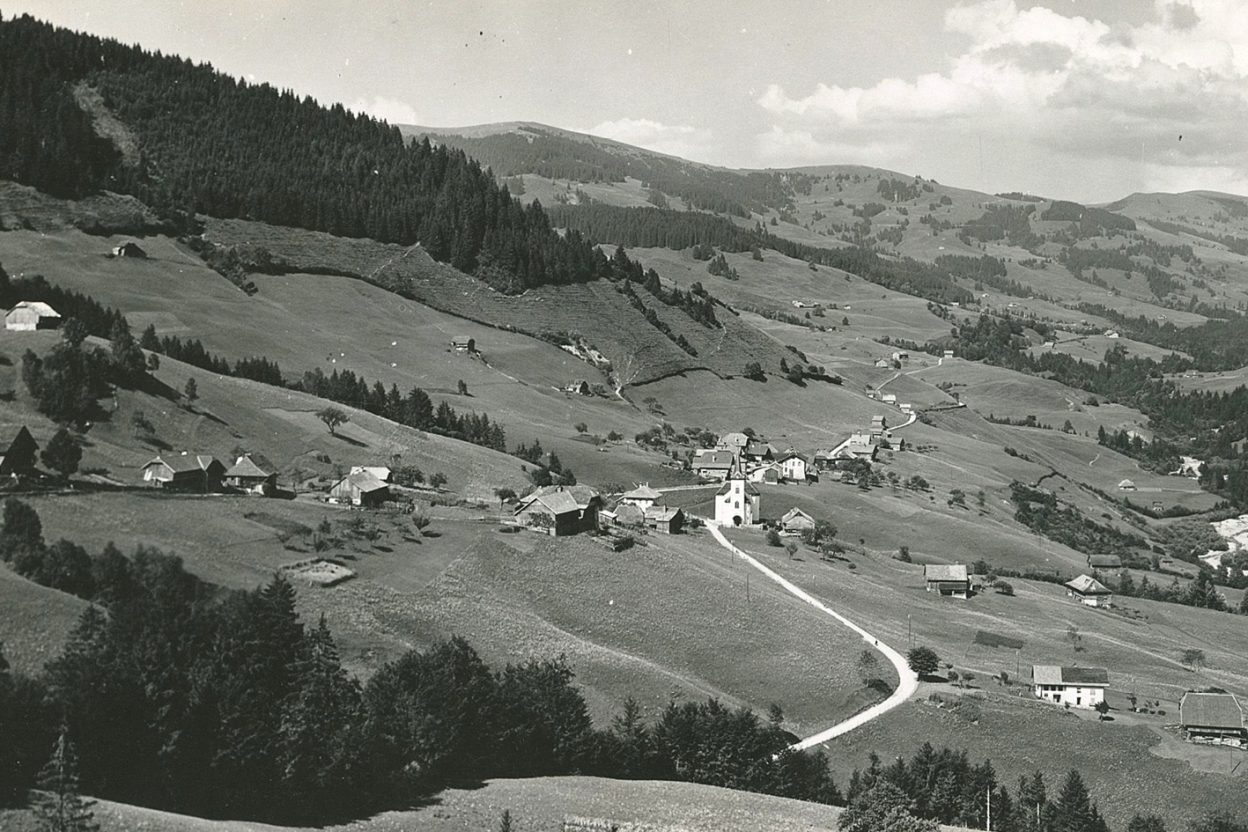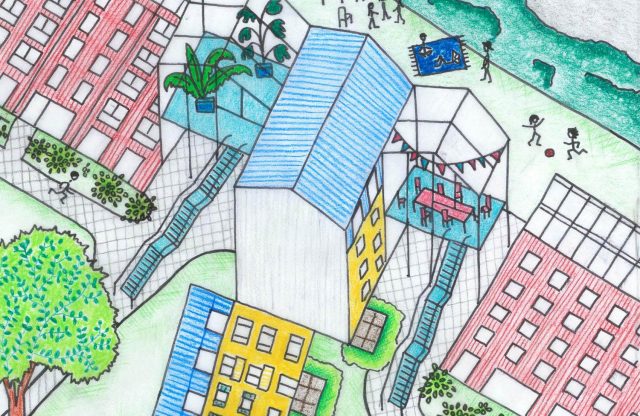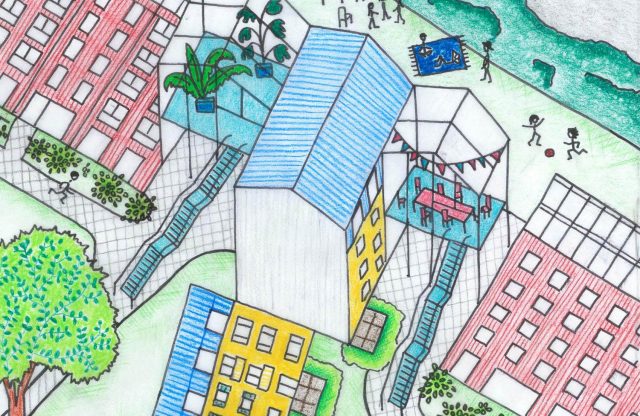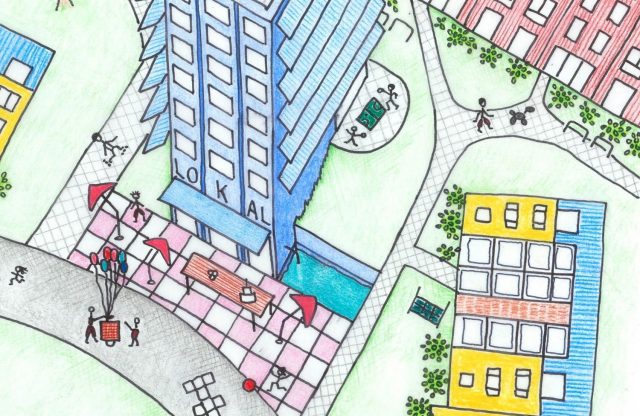ATELIER JMA-FR 3
Habiter la campagne
Orientation construction durable
 Cerniat, Gruyère, Simon Glasson, vers 1950. Source: Bibliothèque cantonale et universitaire de Fribourg
Cerniat, Gruyère, Simon Glasson, vers 1950. Source: Bibliothèque cantonale et universitaire de Fribourg
Contenu CONTENT
L’atelier se concentrera sur l’idée d’habiter la campagne et explorera comment le logement collectif peut être imaginé dans les contextes ruraux, en tenant compte des conditions spécifiques du territoire. L’atelier se déroulera dans la région de Gruyère, en étudiant la manière dont les matériaux sont traités, transportés et assemblés dans cette région, avec l’objectif de développer des façons de construire en équilibre avec les ressources locales. Le point de départ de l’atelier sera l’observation attentive de l’architecture vernaculaire, en reconnaissant le savoir-faire et la tradition tout en cherchant à innover et à renforcer la résilience avec des solutions bas-carbone et circulaires, en comprenant la construction à la fois comme un effort poétique et rigoureux.
The design studio will focus on the idea of inhabiting the countryside and will explore how collective housing can be imagined in rural contexts, taking into account the specific conditions of the territory. It will take place in the Gruyère region, studying how materials are processed, transported and assembled in this region, with the aim of developing ways of building in equilibrium with local resources. The starting point for the design studio will be the careful observation of vernacular architecture, recognising craftsmanship and tradition while seeking to innovate and strengthen resilience with low-carbon and circular solutions, understanding construction as both a poetic and rigorous endeavour.
Objectifs d’enseignement TEACHING AIMs
À travers une observation précise, nous réaliserons de grands dessins orthographiques et des maquettes, allant du détail au territoire. Ce travail servira de point de départ pour les projets dans l’atelier, assurant une connexion profonde entre l’intervention architecturale et son contexte. Nous explorerons l’idée de l’habiter, comprenant l’espace domestique non seulement comme un réalité physique, mais comme le lieu que nous habitons, qui a une connexion profonde avec la matière, l’endroit et avec qui nous vivons. Nous nous intéressons aussi à la dimension sociale de la construction, en considérant non seulement les matériaux et les processus, mais aussi les personnes qui les façonnent, en plaidant pour une architecture à la fois écologiquement et socialement durable.
Through careful observation, we will create large-scale orthographic drawings and models, ranging from details to territory. This work will serve as a starting point for projects in the design studio, ensuring a deep connection between the architectural intervention and its context. We will explore the idea of inhabiting, understanding the house not only as a physical space, but as the place we inhabit, which has a deep connection with the way, the place and with whom we live. We are also interested in the social dimension of construction, considering not only materials and processes, but also the people who shape them, advocating for architecture that is both ecologically and socially sustainable.
Formes d’enseignement TEACHING METHODS
Selon trois actions fondamentales : observer, habiter et construire, le développement des projets sera structuré par une série d’exercices, visant à atteindre des objectifs clairs, tant individuellement que collectivement. L’atelier utilisera des moyens purement architecturaux : dessins, photographies, images faites à la main et maquettes à grande échelle comme instruments d’exploration et de découverte. Nous engageons les étudiant·es dans un processus de réflexion par la pratique, intuitif et ouvert, pour résoudre des problématiques complexes avec des solutions simples et intuitives. L’atelier encourage la curiosité et l’expérimentation, invitant les étudiant·es à découvrir de nouvelles manières de voir, penser et faire.
According to three fundamental actions: observing, living, and building, project development will be structured around a series of exercises aimed at achieving clear objectives, both individually and collectively. The design studio will use purely architectural means: drawings, photographs, hand-drawn images, and large-scale models as tools for exploration and discovery. We engage students in a process of reflection through practice, intuitive and open, to solve complex problems with simple and intuitive solutions. The workshop encourages curiosity and experimentation, inviting students to discover new ways of seeing, thinking and doing.
INFORMATIONS COMPLÉMENTAIRES ADDITIONAL INFORMATION
La première semaine de l’atelier, nous voyagerons dans la région de Gruyère.
L’atelier comprends deux sessions de travail à l’atelier PopUP (semaines 39 et 48). Lors du travail à l’atelier PopUP, il est obligatoire de porter des vêtements de travail et de chaussures de sécurité et de suivre les consignes de sécurité données par les enseignants et l’équipe technique de l’atelier PopUp.
During the first week of the workshop, we will travel to the Gruyère region.
The workshop includes two work sessions at the PopUP workshop (weeks 39 and 48). When working at the atelier PopUP, it is mandatory to wear work clothes and safety shoes, and to follow the safety instructions given by the teachers and the atelier PopUp technical staff.




